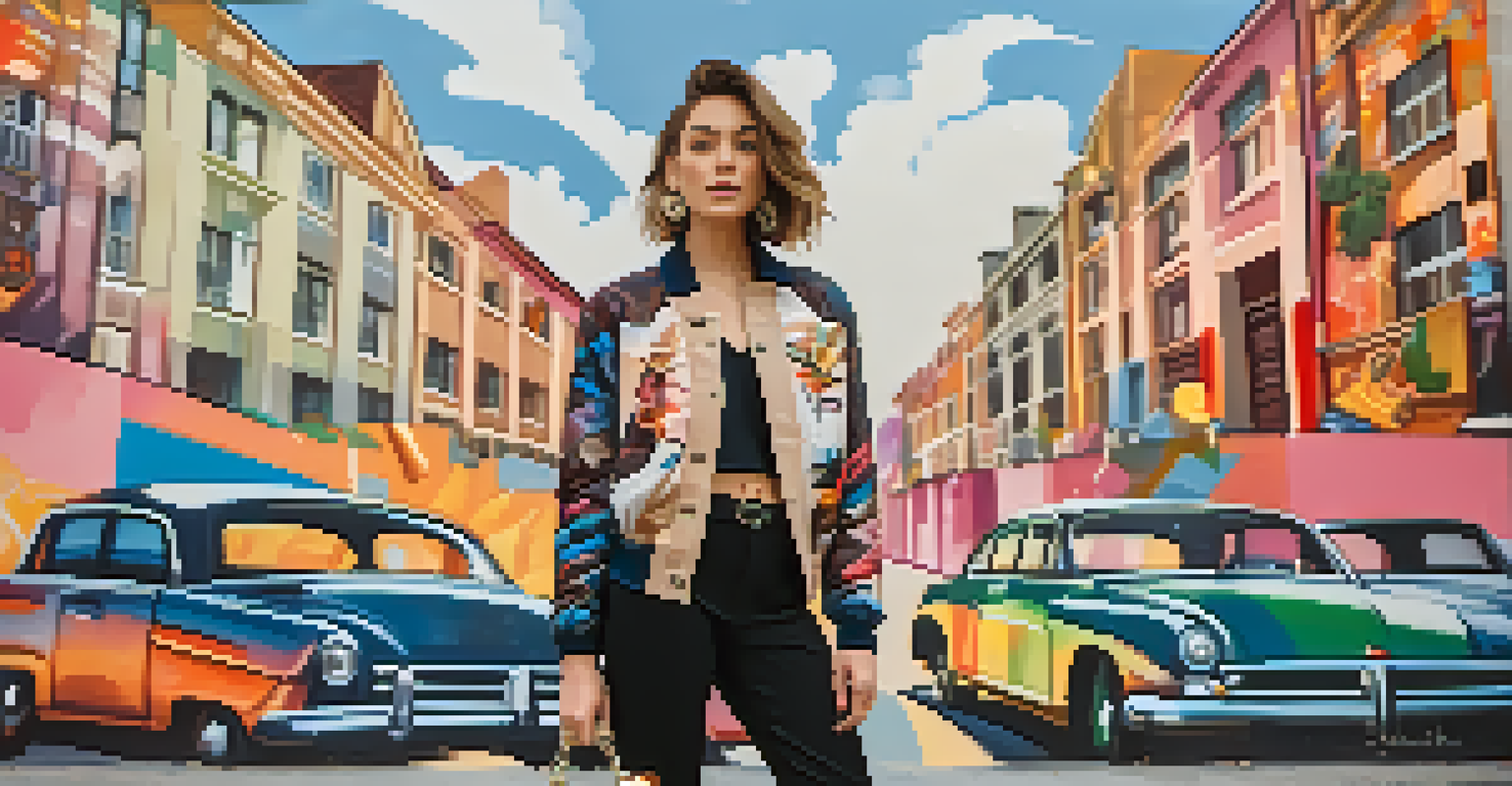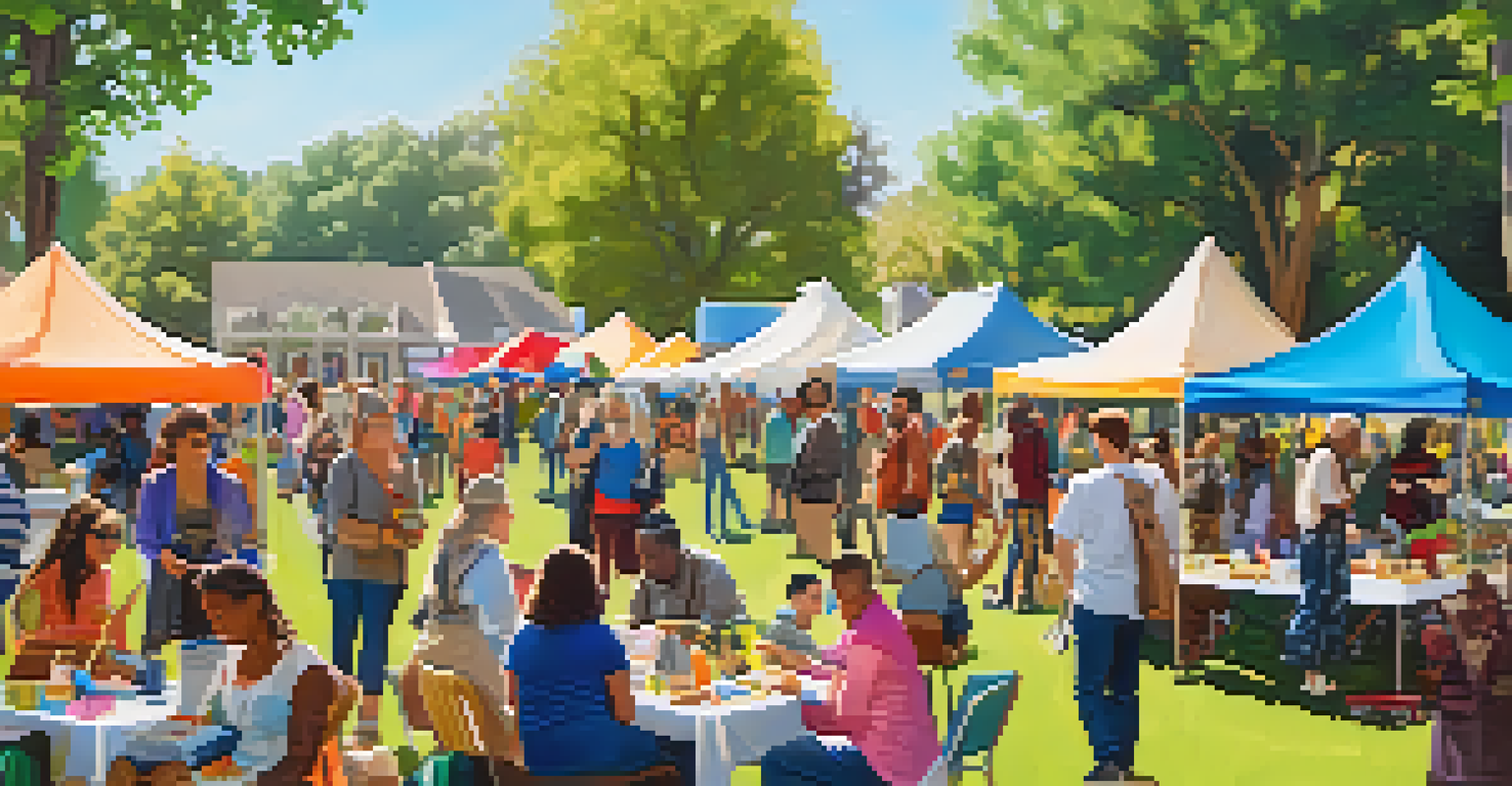How Social Media Influences Second-Hand Fashion Purchases

The Rise of Second-Hand Fashion on Social Media
In recent years, second-hand fashion has gained immense popularity, largely fueled by social media. Platforms like Instagram and TikTok showcase vintage finds and thrift hauls that inspire followers to explore second-hand options. This trend not only promotes sustainability but also offers unique fashion choices that stand out from mass-produced items.
Fashion is about something that comes from within you.
Social media influencers play a pivotal role in this shift, often sharing their personal experiences with thrift shopping. Their curated feeds highlight the charm and individuality of second-hand pieces, encouraging their audience to think twice before purchasing new. As followers see these influencers styling vintage items, they start to view second-hand fashion as not just an alternative, but a desirable option.
Moreover, the accessibility of social media allows anyone to share their second-hand finds, creating a community of like-minded individuals. Hashtags like #ThriftedFashion and #SustainableStyle proliferate, connecting users and showcasing the creativity involved in mixing and matching pre-loved clothing.
Influencer Marketing and Thrift Culture
Influencer marketing has shifted the way brands and consumers interact, particularly in the realm of second-hand fashion. Influencers often partner with thrift stores or online resale platforms to promote their curated collections, making these items more appealing to their followers. This strategic alliance not only boosts sales but also enhances the visibility of thrift culture.

When influencers highlight their favorite thrifted pieces, they demystify the process of shopping second-hand. Their storytelling often includes tips on finding the best items or how to style them, making it less intimidating for newcomers. This guidance fosters a sense of community and encourages more people to jump on the thrift bandwagon.
Social Media Fuels Thrift Fashion
Platforms like Instagram and TikTok have popularized second-hand fashion, promoting sustainability and unique style choices.
Additionally, influencer-led campaigns often emphasize the uniqueness of thrifted items, which appeals to consumers looking for individuality in their wardrobe. The notion that one can own a piece with its own history adds an emotional layer, making the purchase feel more meaningful.
The Role of Visual Platforms in Fashion Choices
Visual platforms like Instagram and Pinterest are at the forefront of shaping fashion trends, especially in the second-hand market. With their emphasis on aesthetics, these platforms allow users to see how second-hand items can be styled in diverse ways. This visual appeal can be a driving force behind a consumer's decision to purchase thrifted clothing.
Sustainability is no longer about doing less harm. It's about doing more good.
For instance, seeing a stylish influencer mix a vintage jacket with modern pieces can spark creativity in followers. They start imagining how similar items could fit into their own wardrobes, leading to increased interest in second-hand shopping. The visual aspect also allows for instant inspiration, making it easy for users to discover new fashion ideas.
Moreover, the ability to save and share images on these platforms means that users can curate their own style inspirations. This further reinforces the notion that second-hand items can be just as trendy and chic as new ones, breaking down preconceived notions about thrift fashion.
Community Building Through Thrift Shopping
Social media has transformed second-hand fashion shopping into a community-driven experience. Thrift enthusiasts often share their finds and styling tips, creating a supportive environment where everyone can learn from one another. This sense of belonging encourages more people to explore the world of thrift shopping.
Online groups and forums dedicated to second-hand fashion allow users to connect and share their experiences. These platforms create a space for discussions about sustainable fashion, tips for thrift shopping, and even swapping items within the community. Such interactions foster relationships and enhance the overall shopping experience.
Influencers Shape Thrift Culture
Influencer marketing demystifies second-hand shopping, making it appealing and accessible through personal storytelling and curated collections.
Additionally, events like thrift swaps or pop-up shops promoted through social media can further strengthen this community. They bring individuals together, allowing them to celebrate their love for second-hand fashion while finding new treasures to take home.
The Impact of Sustainability Awareness
The growing awareness of sustainability has significantly influenced consumer behavior, particularly in fashion. Social media plays a crucial role in educating users about the environmental impact of fast fashion, prompting many to seek more sustainable options. As a result, second-hand shopping has become synonymous with eco-conscious choices.
Influencers often advocate for sustainable practices, sharing statistics and personal stories that highlight the benefits of buying second-hand. This messaging resonates with individuals who are becoming more mindful of their consumption habits. As they learn about the advantages of thrift shopping, many are inspired to make the switch to second-hand fashion.
Moreover, brands that prioritize sustainability and collaborate with influencers help amplify this message. By aligning themselves with eco-friendly values, they attract consumers who are passionate about making responsible fashion choices, driving further interest in second-hand shopping.
Challenges of Social Media in Thrift Shopping
While social media has many benefits for second-hand fashion, it also presents challenges. The pressure to curate an aesthetically pleasing feed can lead to overconsumption, as users might feel compelled to buy more than they need. This contradicts the very essence of sustainable fashion and can diminish the positive impact of thrift shopping.
Additionally, the fast-paced nature of social media can create a sense of urgency around trends. Consumers may rush to purchase items they see online, only to realize later that they don’t truly love them. This impulse buying can lead to regret and a cycle of unused items, undermining the sustainability message.
Community and Sustainability Unite
Social media fosters a supportive community around thrift shopping, while raising awareness about the environmental benefits of sustainable fashion.
Lastly, the overwhelming amount of content can make it difficult for users to discern authentic thrift influencers from those who may prioritize sales over genuine advocacy. It's crucial for consumers to remain mindful and selective about whom they follow to ensure they’re receiving valuable and honest insights into second-hand fashion.
The Future of Second-Hand Fashion and Social Media
As social media continues to evolve, so will its influence on second-hand fashion. With the rise of platforms that focus specifically on resale, like Depop and Poshmark, the landscape is changing rapidly. These platforms are increasingly integrating social features that encourage community engagement, making thrift shopping more accessible and enjoyable.
Innovative technologies, such as augmented reality (AR), may also play a role in the future of second-hand fashion. Imagine being able to virtually try on thrifted items before purchasing, making the shopping experience even more interactive. This could bridge the gap between online shopping and personal connection, enhancing consumer confidence in buying second-hand.

Ultimately, as more people embrace sustainable practices and seek unique fashion statements, the bond between social media and second-hand fashion will likely grow stronger. This relationship has the potential to reshape the industry, driving a new wave of environmentally conscious consumers who value both style and sustainability.